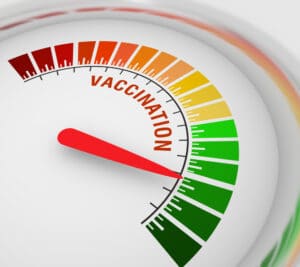SNFs Approach Mandated Vaccination Rates
Recent data from the Centers for Medicare and Medicaid Services (CMS) indicates skilled nursing facilities are steadily approaching required vaccinated rates for employees as mandated by CMS, reports Skilled Nursing News. About 85 percent of employees have already been vaccinated against COVID-19 per facility. The rate for vaccinated residents is slightly higher at 87.3 percent. Rates for booster shots lag behind significantly for staff at 40.5 percent, while at about 73.4 percent for residents.
Large facilities have used different tactics to help reach the vaccination rates. For example, Georgia based PruittHealth allotted $23.4 million to help incentivize vaccine uptake and to help retain their employees. They offered cash raffles for employees who were vaccinated and bonus pay ranging from $250 to $1500 per person. With this strategy, Pruitt was able to achieve a 100 percent vaccination rate among all employees in March.
Booster rates lag behind as trust for the vaccine was compromised when omicron caused breakthrough infections among vaccinated individuals. However, the Centers for Disease Control and Prevention (CDC) states vaccinated individuals are still better protected against hospitalization, severe illness and death if they have received the booster shot when compared to those who have not received it. For the two-dose vaccine, an individual is qualified for a booster shot five months after the second dose and two months after the one-shot vaccine – Johnson & Johnson.

